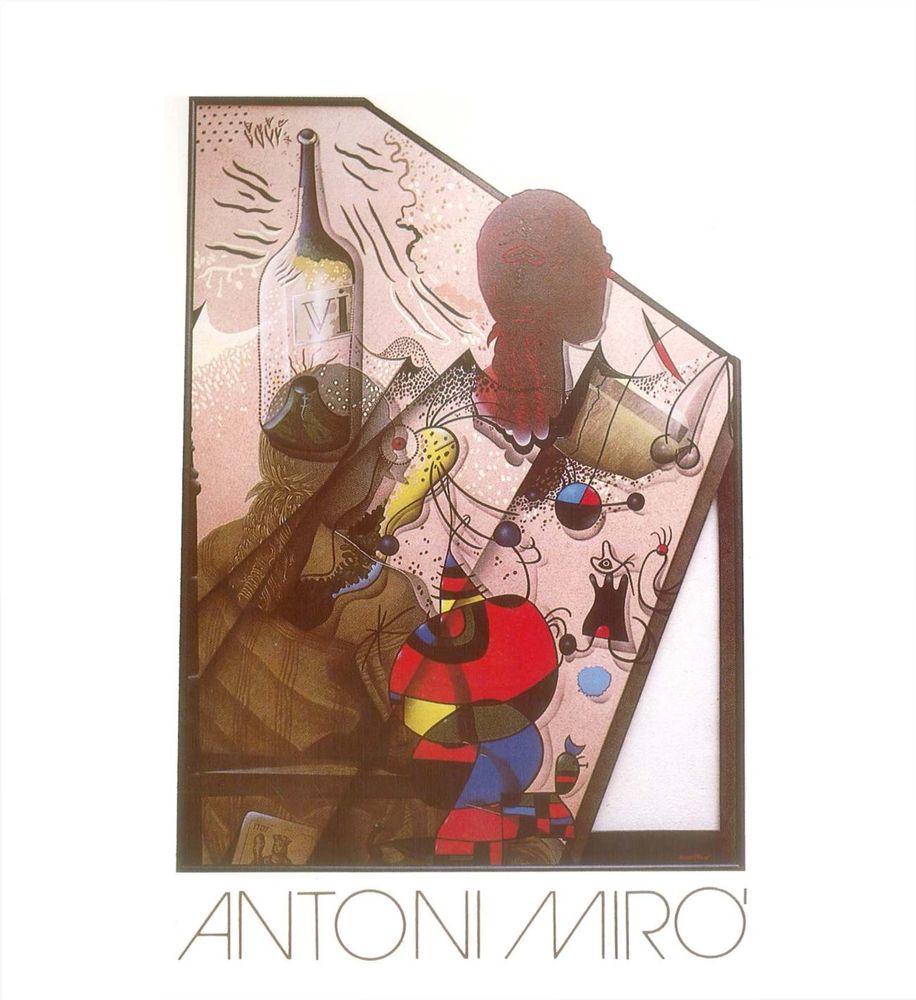Beats and impulses to Antoni Miró’s work
Glòria Bosch i Mir
I doubt if the expressions «beat» and «impulse» will be enough accurate to reflect the communicative strength of Antoni Miró’s works. What I know is that of each image, anxieties and sharp ironies emerged as a result of an impulsive transposition of elements. We have the report, the witness, but always in accordance with «created» aesthetics, a code of interchangeable symbols where perception-communication always appears due to a high symbolic content. This is how the technical command confirms them plastically.
If we review Antoni Miró’s production, we will find out some beating perception points. The hands are one of them. The hands, especially in the series of «Amèrica Negra» (Black America), have a basic importance at the time of suggesting human situations and they become symbols of delay, fight, strength, misfortune, loss, violence, link, expression of love, memories, pursuit... They are the power which enslaves but also the point in which you feel to be a slave. They are the gesture —remember the lithography of «Allende» in 73— and, thus, when he paints «A cops» he did a hand with the closed fist, at the forefront, expanded to almost invade all the composition.
The hands often appear for intersecting meanings and empower the strength of every expression. They serve not only to physically kill, but also to culturally kill and, in general, to kill the freedom of every expressive action. They are, thus, the necessary instrument to materialise ideas, in the same way as Toni Miró uses them to plastically represent interiority. They are a tireless source of expression and a point where a synchrony among thought-action is verified. It is this dynamic what confers the maximum of readings to his work. Readings that, overall, directly and beating suggest the audience who receives the beats before the «message». If we want to look for the symbols of the hand, it will be exhaustive. For example, between the Berbers and Romans they acquired a sense of protection, authority and strength; but it is Schneider, one of those who go in depth, classifies them as an «internal corporal demonstration of the human being condition».
In the series «El dólar» other elements came into play and, specially the damaged, crumpled-up, folded notes... due to the light movement of the paper when in crumpling. It is an ephemeral and volatile material so that it crushes with its weight the consciousnesses of the world. In the whole work of Antoni Miró, feelings are jumbled over a stable and committed communicative basis that transposes some social and cultural models which express a common bottom of attitudes, some historical paradigms which, by means of irony, we see them renewed in the habits but they approach us to other aspects of perpetual involution.
The most recent paintings strengthen the choice of past models or historical myths through closer compositions regarding elements. Transpositions, in some degree metamorphoses, continue being the key point of his «messages». Expression doses will perhaps increase when reducing the balanced elements, but the sarcasm and irony are more elaborated regarding communicative projection —the detonator impact at other stages is not properly viewed— and, especially, technique. A «Saint Paul» can appear with scissors, the king of club in the Spanish deck of cards, some disoriented insects... and the «Duchess of Alba» with a package of cigarettes as provisioning while the «Count Duque» is having his ironic analogy in a character of the comic.
The internationality applicable to every idea always in terms of a game of symbols which firstly stress and injure the retina, but once surpassed the first impression; they shoot at the brain and facilitate the reflection mechanisms. Some reflection dealt with the dramas of everyday life, the problems of a town or towns which prefer to forget the conflict and to be locked in the drawer of labels.
